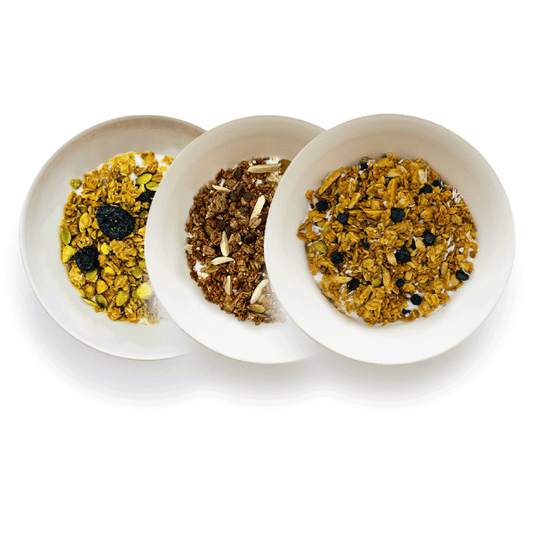Elevate Your Nutrition: Mastering the Art of Combining Plant-Based Proteins
By FireRoad
As more people shift towards plant-based diets for health and environmental reasons, the question often arises: how can one ensure they are receiving complete nutrition? One of the critical components of a healthy diet is protein. However, not all plant-based proteins contain all the essential amino acids our bodies require. In this article, we will explore the concept of combining plant-based proteins to craft meals that are both nutritious and flavorful while supporting your fitness goals.
Understanding Plant-Based Proteins
Proteins are composed of building blocks known as amino acids. There are 20 different amino acids, nine of which are considered essential because our bodies cannot produce them; thus, we must obtain them through our diet. Most animal proteins provide a complete amino acid profile, but many plant-based sources do not.
Understanding how to combine different plant-based proteins can help ensure that you get all the necessary nutrients without relying on animal products. This strategy not only improves the nutritional value of your meals but also introduces an array of flavors to elevate your cooking.
The Importance of Complementary Proteins
Complementary proteins are two or more protein sources that, when combined, provide all nine essential amino acids. By using a variety of plant-based proteins in your meals, you can achieve a complete protein profile while enjoying different textures and flavors.
Common Sources of Plant-Based Proteins
- Legumes: Beans, lentils, and peas are excellent sources of protein and are rich in other nutrients, making them staple ingredients.
- Grains: Quinoa, brown rice, and whole wheat products provide protein and fiber, which keeps you full and satisfied.
- Nuts and Seeds: Almonds, walnuts, chia seeds, and flaxseeds not only offer protein but also healthy fats.
- Vegetables: Leafy greens and cruciferous vegetables contain protein, though in smaller amounts.
The Best Combinations for Complete Nutrition
Now that we understand the types of plant-based proteins, let’s look at some successful combinations that can create a complete protein profile while being delicious and nutritious.
1. Rice and Beans
This classic combination is not only budget-friendly but also packed with nutrients. Rice provides a good source of carbohydrates and amino acids like cysteine and methionine, which are low in beans. On the other hand, beans are high in lysine but lack sulfur-containing amino acids. Together, they create a protein powerhouse that supports your fitness needs.
2. Hummus and Whole Grain Pita
Hummus, made from chickpeas, provides a good amount of protein. Pairing this savory dip with whole grain pita bread adds in additional nutrients, making it a beautiful snack or meal. The wheat in the pita complements the amino acids in chickpeas very well.
3. Quinoa and Tofu
Quinoa is a rare plant food that's considered a complete protein on its own, but when paired with tofu, it provides even more diversity in nutrients and flavors. Tofu, made from soybeans, adds an excellent protein boost, along with essential fatty acids and minerals like calcium.
4. Pea Protein and Spinach Smoothie
Blending pea protein powder with spinach and your favorite fruits creates a nutrient-rich smoothie. Spinach provides iron and folate, enriching your smoothie with vital nutrients while the pea protein helps you meet your daily protein intake.
Enhancing Flavor in Your Protein Combinations
Combining different plant proteins doesn't have to mean sacrificing flavor. Here are some tips for enhancing your meals:
- Herbs and Spices: Experiment with fresh herbs, spices, and citrus to elevate the taste of your dishes.
- Healthy Fats: Incorporate avocados, olive oil, or nuts for an added layer of flavor and essential nutrients.
- Cooking Techniques: Roasting or grilling ingredients can bring out their natural flavors, making any combination more delicious.
The Nutritional Benefits of Plant-Based Proteins
In addition to supplying essential amino acids, plant-based proteins also come packed with other health benefits:
1. Rich in Fiber
Many plant-based proteins are also high in fiber, which helps promote digestive health and keeps you feeling full longer. This is an essential nutrient for anyone leading an active lifestyle.
2. Packed with Antioxidants
Plant proteins often contain antioxidants that help combat oxidative stress in our bodies, contributing to overall well-being and fitness recovery.
3. Lower in Saturated Fats
Plant-based proteins tend to be lower in saturated fats compared to their animal counterparts, making them heart-healthy options. This can reduce the risk of cardiovascular issues and align with a healthy lifestyle.
Making the Shift to Plant-Based Proteins
For those considering making the switch to a more plant-based diet, here are some practical tips to ease the transition:
- Start Slowly: Introduce more plant-based meals into your weekly routine without completely eliminating animal products right away.
- Explore New Recipes: Experiment with different cuisines that naturally incorporate a variety of plant proteins.
- Focus on Whole Foods: Prioritize whole, minimally processed foods to maximize nutrients and flavors.
Final Thoughts: Nourish Your Body and Delight Your Taste Buds
Combining plant-based proteins not only allows for a diverse and enjoyable culinary experience but also guarantees that you’re getting a complete array of nutrients. Whether you're a fitness enthusiast or simply striving for a healthier lifestyle, embracing the power of plant-based proteins can lead to numerous health benefits. By following the combinations and strategies outlined above, each meal can be a step towards optimal health, flavor, and well-being.











